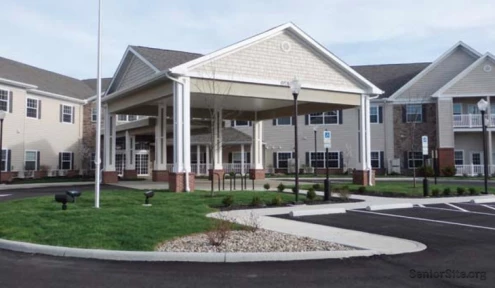Did you know that without advance directives, your family members might need to go to court just to make medical decisions on your behalf if you become incapacitated?
This stark reality highlights why planning ahead is so crucial for all of us. Advance directives are legal instructions that specify your treatment preferences when you cannot communicate them yourself. Importantly, these documents aren’t just for the elderly—they apply to adults of any age. The different types of advance directives include living wills and durable powers of attorney for healthcare, giving you comprehensive protection for various medical scenarios. In fact, data shows that families cope significantly better during difficult circumstances when advance care planning has been completed beforehand.
Since 1991, the Patient Self-Determination Act has given us the right to make decisions about our future healthcare treatment. However, many people still haven’t taken advantage of this important right. By completing an advance directives form, we can relieve our loved ones of heavy decision-making burdens during times of crisis or grief and help prevent confusion about our treatment choices.
In this article, we’ll walk through everything you need to know about creating, updating, and storing your advance directives to ensure your medical wishes are respected.
What Are Advance Directives?
Advance directives serve as the foundation for protecting your medical preferences when you can’t speak for yourself. These legally binding documents stand as a shield for your healthcare wishes during critical moments. Let’s understand what they are and why they matter for all adults.
Advance directives definition and purpose
Advance directives are legal documents that outline your preferences for medical care in case you become unable to communicate your own decisions. They exist to ensure that your medical choices are respected even when you can’t express them yourself. Essentially, these documents activate only when you cannot make your own healthcare decisions due to illness or incapacity.
The primary purpose of advance directives is twofold:
- They guide your loved ones and healthcare providers in making decisions aligned with your wishes
- They prevent unwanted medical interventions while ensuring you receive the care you do want
Advance directives typically come into effect in specific situations – when you have a terminal illness and can no longer communicate, when you’re deemed unable to make decisions, or when you’re permanently unconscious. Furthermore, these documents help resolve potential conflicts among family members regarding your care.
One crucial aspect to understand is that advance directives aren’t just documents—they represent an ongoing conversation about your values and preferences. By documenting these wishes, you maintain control over your treatment plan even if you become incapacitated near the end of life.
Why they matter at any age
Many people mistakenly believe advance directives are only for the elderly or terminally ill. This misconception can leave young adults unprotected. The truth? Advance directives matter for everyone over 18, regardless of current health status. Unexpected accidents or sudden illnesses can affect anyone at any age.
A recent study revealed that despite their importance, approximately two-thirds of U.S. adults do not have an advance directive. This gap leaves countless Americans vulnerable to receiving unwanted medical interventions or having decisions made by people they might not have chosen.
The benefits of having advance directives extend beyond personal peace of mind:
- They eliminate guesswork for healthcare providers during emergencies
- They relieve loved ones from the burden of making difficult decisions without guidance
- They help avoid unnecessary pain, unhelpful procedures, and unwanted hospitalizations
- They reduce potential conflicts among family members during emotionally charged times
Additionally, advance directives protect against situations where, without documentation, a relative you wouldn’t have chosen might become legally responsible for your medical care decisions. This protection is particularly important for those who may not want their next-of-kin involved in their healthcare decisions.
Advance directives aren’t just legal requirements—they’re a thoughtful gift to yourself and your loved ones. By preparing these documents now, you create clarity during potentially chaotic situations, allowing your voice to be heard even when you cannot speak.
Types of Advance Directives Explained
Understanding the various types of advance directives available helps ensure your specific medical wishes are honored. Different documents serve different purposes, each playing a unique role in your healthcare planning strategy.
Living will vs. durable power of attorney
Living wills and durable powers of attorney for healthcare function as complementary but distinct tools in your advance planning toolkit.
A living will specifically outlines your preferences for medical treatments if you develop a terminal illness or injury that prevents communication. This document addresses life-prolonging procedures including tube feeding, assisted breathing, and resuscitation. Importantly, a living will becomes effective only when you cannot communicate and are terminally ill or permanently unconscious.
Conversely, a durable power of attorney for healthcare (sometimes called a healthcare proxy) names a trusted person to make medical decisions when you cannot. This document applies more broadly than a living will, covering both end-of-life care and other medical situations. Your appointed agent steps in whenever you become incapable of making healthcare decisions, whether your condition is terminal or not.
Although these documents serve different purposes, many experts recommend having both. Together, they create a comprehensive approach to ensuring your wishes are followed. Nevertheless, understand that if conflicts arise between the two documents, your living will generally takes precedence over your healthcare power of attorney.
Advance directives examples in real-life scenarios
Consider these real-world scenarios that demonstrate how advance directives function:
Case 1: Jasmine, who had poorly controlled high blood pressure, suffered a severe brain bleed. Without an advance directive, her husband faced difficult decisions about her care after doctors determined she would likely never care for herself again. Had Jasmine completed an advance directive, her specific wishes would have guided her treatment plan.
Case 2: DeShawn expressed that life was precious to him and wanted “everything done” if there was any chance he could continue watching TV and listening to music. After a serious fall, his designated healthcare agent was able to communicate these specific wishes to his doctors, ensuring his preferences were honored.
Case 3: Alice, an 84-year-old with oxygen-dependent emphysema, named all three of her daughters as healthcare decision-makers despite her doctor’s recommendation to designate a single agent. This arrangement created potential for conflict among her daughters during her medical crisis.
Other forms: DNR, DNI, POLST
Beyond standard advance directives, several specialized medical orders address specific situations:
Do Not Resuscitate (DNR) orders instruct medical personnel not to perform cardiopulmonary resuscitation if your heart stops or you stop breathing. Unlike other directives, DNR orders become part of your medical chart and require a physician’s signature.
Do Not Intubate (DNI) orders specifically prevent the placement of breathing tubes or connection to ventilators while potentially allowing other interventions. This gives you more nuanced control over your care preferences.
Physician Orders for Life-Sustaining Treatment (POLST) forms differ from traditional advance directives. These bright-colored forms, completed with your healthcare provider, translate your wishes into specific medical orders. POLST forms are particularly appropriate for those with serious illness or frailty and travel with you across healthcare settings.
Other variations include Allow Natural Death (AND) orders, which prioritize comfort care, and specified DNRs tailored to particular circumstances.
Remember that these supplementary documents can work alongside your primary advance directives to create a comprehensive plan tailored to your specific medical wishes and values.
How to Create an Advance Directive Step-by-Step
Creating your advance directives doesn’t need to be overwhelming. By following these five steps, you’ll establish clear guidance for your medical care when you need it most.
Step 1: Reflect on your values and care preferences
Begin by contemplating what matters most to you concerning your medical care. Consider various scenarios—terminal illness, permanent unconsciousness, or temporary inability to communicate. Ask yourself questions about quality of life, pain management, and life-sustaining treatments. This thoughtful reflection forms the foundation of your advance directives, enabling you to document preferences that genuinely reflect your personal values.
Step 2: Choose a trusted health care proxy
Selecting your health care agent (also called a proxy) requires careful consideration. This individual will make medical decisions on your behalf if you become incapacitated. Choose someone who:
- Knows your values well
- Is willing to honor your wishes
- Can make difficult decisions under pressure
- Is comfortable communicating with medical professionals
After identifying potential candidates, have an honest conversation about your expectations. Remember to select an alternate proxy as backup in case your first choice becomes unavailable.
Step 3: Fill out your advance directives form
Obtain the appropriate advance directives forms for your state, as requirements vary across jurisdictions. These forms are typically available through:
- Your state health department website
- Hospitals and healthcare facilities
- Senior centers
- Online resources
Read all instructions carefully before completing the forms. Document your preferences regarding CPR, mechanical ventilation, tube feeding, dialysis, antibiotics, comfort care, and organ donation. Be as specific as possible about your wishes.
Step 4: Get it witnessed or notarized
For your advance directives to be legally valid, they must be properly authenticated. Most states require either:
- Two witnesses (who typically cannot be your healthcare provider, agent, or someone who might inherit from you)
- Notarization by a notary public
Follow your state’s specific requirements precisely. Some states require both witnesses and notarization for maximum legal protection.
Step 5: Share copies with key people
Your advance directives only work if the right people can access them when needed. Therefore:
- Keep the original in a safe yet accessible location
- Give copies to your healthcare proxy and alternate
- Provide copies to your physicians for inclusion in your medical records
- Share with close family members or trusted friends
- Consider uploading to an electronic registry if your state offers one
Carrying a wallet card indicating you have advance directives and where to find them adds another layer of protection.
Remember—advance directives aren’t permanent documents. Review them periodically, particularly after major life events such as marriage, divorce, or significant health changes. Creating these documents today ensures your medical wishes will be respected tomorrow.
Legal and Practical Considerations
Understanding the legal framework behind advance directives ensures your documents will be honored when needed. Let’s examine the key considerations that make your advance directives legally effective and accessible during critical moments.
Do you need a lawyer?
Contrary to common belief, you typically don’t need a lawyer to create valid advance directives. These documents are designed to be accessible and easy to complete independently. Nonetheless, consulting an attorney might be beneficial in certain circumstances, especially if you have complex medical needs or unusual family dynamics.
For most people, state-provided forms offer a straightforward, cost-effective solution. You can obtain these forms through:
- Your state’s Attorney General’s office
- Local Area Agency on Aging
- Veteran’s Affairs (for veterans)
- National organizations like AARP or the National Hospice and Palliative Care Organization
State-specific requirements to know
The legality and scope of advance directives differ considerably from state to state. These variations include:
First, witnessing requirements vary significantly – most states mandate either two witnesses, notarization, or sometimes both for your documents to be legally valid. Witnesses typically cannot be your healthcare providers, designated agents, or potential heirs.
Second, cross-state recognition presents challenges. Some states honor out-of-state directives completely, others only if they match local laws, whereas some have no clear policy. Consequently, if you spend significant time in multiple states, completing advance directives for each jurisdiction offers the most comprehensive protection.
Finally, the Patient Self-Determination Act requires Medicare and Medicaid providers to inform patients about advance directives under their state laws and to implement them when appropriate.
Where to store and register your forms
For advance directives to function effectively, they must remain accessible. Keep your original documents in a safe yet easily reachable location, and provide copies to:
- Your healthcare proxy and alternates
- All your physicians and healthcare providers
- Close family members
Many states maintain advance directive registries where you can officially file your documents. For instance, California’s Secretary of State manages an Advance Health Care Directive Registry that makes your information available to healthcare providers upon request. Registration typically involves a modest fee (about $10 in California) and submitting a completed registration form along with your directive.
Carrying a wallet card noting you have advance directives and their location provides an additional safeguard, especially during emergencies far from home.
When and How to Update Your Directive
Life doesn’t stand still, and neither should your advance directives. These crucial documents require periodic review to ensure they consistently reflect your current wishes and circumstances.
Life events that trigger a review
Your advance directives should be reviewed at least once each year. Moreover, certain significant life changes should prompt an immediate reassessment of your documents. Healthcare professionals often recommend using the “5 Ds” as a helpful reminder for when to update your advance directives:
- Death of a loved one, especially your named healthcare agent
- Divorce or significant relationship changes
- Decline in your overall health condition
- Diagnosis of a serious or terminal illness
- Decade birthday (approximately every 10 years)
Additional circumstances warranting review include retirement, moving to another state, changes in your health status, or when your appointed healthcare agent becomes unavailable. Likewise, your personal values regarding end-of-life care might evolve over time, necessitating updates to your documents.
How to make changes and notify others
Updating your advance directives is straightforward yet requires attention to detail. First, you can make minor changes by initialing them on your original document. Alternatively, for significant modifications, create entirely new forms—this approach reduces potential confusion.
Subsequently, after completing your updates:
- Destroy old copies to prevent confusion about your current wishes
- Provide new copies to your healthcare agent, medical providers, and family members
- Update your registry if your documents are registered with your state
Remember that the most recently dated advance directive supersedes older versions. Hence, clearly dating your new documents is essential. For state registry updates, check if an amendment form is required or if you need to complete a new registration. Several states charge nominal fees (approximately $10) for registering updated documents.
Importantly, alongside distributing new documents, verbally discuss your changes with your healthcare agent and loved ones. This conversation ensures everyone understands your current preferences and reduces the potential for misinterpretation during critical moments.
Conclusion
Advance directives stand as one of the most important yet overlooked aspects of healthcare planning for adults of all ages. Throughout this guide, we’ve explored their critical role in protecting your medical wishes when you cannot communicate them yourself. Undoubtedly, creating these documents provides peace of mind not just for you but also for your loved ones who might otherwise face difficult decisions without guidance.
Remember that advance directives work best when they truly reflect your personal values and wishes. Therefore, take time to thoughtfully consider what matters most to you regarding your medical care. Additionally, choose your healthcare proxy wisely—this person will become your voice when you cannot speak for yourself.
The five-step process we’ve outlined makes creating advance directives straightforward: reflect on your values, select a trusted proxy, complete the appropriate forms, get them properly witnessed or notarized, and share copies with key people. Though state requirements vary, most advance directives don’t require a lawyer’s assistance unless your situation involves complex circumstances.
Last but certainly not least, view your advance directives as living documents that should evolve as your life changes. Whenever you experience significant life events like marriage, divorce, or health changes, review and update your directives accordingly. This regular maintenance ensures your documents always represent your current wishes.
We hope this guide empowers you to take control of your future medical care. After all, advance directives represent more than just legal documents—they embody your right to determine how you live, even during life’s most challenging moments.
FAQs
Q1. What are the key components of an advance directive? An advance directive typically consists of two main parts: a living will that outlines your medical treatment preferences, and a durable power of attorney for healthcare that designates someone to make decisions on your behalf. Some advance directives may also include additional forms like DNR (Do Not Resuscitate) orders or POLST (Physician Orders for Life-Sustaining Treatment) forms.
Q2. Do I need a lawyer to create an advance directive? In most cases, you don’t need a lawyer to create a valid advance directive. State-provided forms are usually available and can be completed independently. However, if you have complex medical needs or unusual family dynamics, consulting an attorney might be beneficial.
Q3. How often should I review my advance directive? It’s recommended to review your advance directive at least once a year. Additionally, you should reassess your documents after significant life events such as marriage, divorce, major health changes, or approximately every decade.
Q4. Can I change my advance directive after I’ve created it? Yes, you can update your advance directive at any time. For minor changes, you can initial them on the original document. For significant modifications, it’s best to create entirely new forms. Remember to destroy old copies, provide new ones to relevant parties, and update any registries where your documents are filed.
Q5. How do I ensure my advance directive will be followed? To increase the likelihood of your advance directive being followed, make sure it’s properly witnessed or notarized according to your state’s laws. Distribute copies to your healthcare proxy, physicians, and family members. Consider registering it with your state’s advance directive registry if available. Carry a wallet card indicating you have an advance directive and where to find it.












